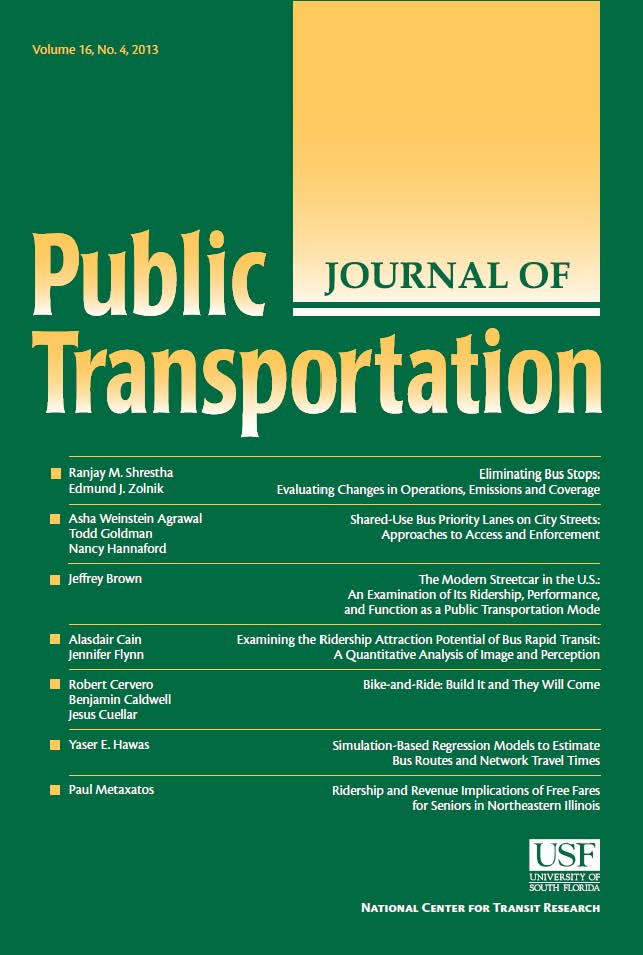How access distance to high-speed rail stations affects individual travel behavior in small cities: A case study of the Chengdu-Chongqing corridor
IF 2
4区 工程技术
Q3 TRANSPORTATION
引用次数: 0
Abstract
The rapid development of high-speed rail (HSR) has generated significant economic and social impacts and garnered extensive scholarly attention. However, there remains a lack of analysis on how access distance to HSR stations affects local residents’ travel behavior from the perspective of the individual. This study attempts to answer this question by utilizing large-scale railway travel data from residents of small cities in China. The raw dataset was provided by the Chengdu Railway Bureau, covering the period from January 1, 2014, to March 20, 2018. Taking the Chengdu-Chongqing HSR as a case study, we used the spatial distance between the residential addresses of individuals and HSR stations as a proxy for accessibility, and we selected over 340,000 residents from eight small cities along the route as observations. A negative binomial regression was employed to estimate the impact of access distance to HSR stations on individual travel behavior. The results indicate that individuals’ access distance to HSR stations has significantly negative effects on the number of HSR trips. Variables representing the individual characteristics of previous travel behavior, ticket purchasing behavior, social status, and wealth significantly affect individual travel frequency. More importantly, the study also demonstrates heterogeneity in the effects of HSR station accessibility on different groups in terms of sex, age, and place of residence. Compared with females and rural residents, the negative impact of HSR station accessibility on male and urban residents' travel behavior is less pronounced. The analysis also shows that HSR station accessibility negatively affects individual travel frequency across different groups, with middle-aged and elderly groups being more sensitive to accessibility constraints. These findings enrich existing research on travel behavior.
小城市高铁站距离对个人出行行为的影响——以成渝走廊为例
高速铁路(HSR)的快速发展产生了重大的经济和社会影响,并引起了广泛的学术关注。然而,从个体角度分析高铁站点的访问距离如何影响当地居民的出行行为仍然缺乏。本研究试图通过利用中国小城市居民的大规模铁路旅行数据来回答这个问题。原始数据集由成都铁路局提供,覆盖时间为2014年1月1日至2018年3月20日。以成渝高铁为例,以个人居住地址与高铁站点之间的空间距离作为可达性指标,选取沿线8个小城市的34万多名居民作为观察对象。采用负二项回归方法估计高铁站点入口距离对个体出行行为的影响。结果表明,个体到高铁站点的距离对高铁出行次数有显著的负向影响。以往出行行为、购票行为、社会地位、财富等代表个体特征的变量显著影响个体出行频率。更重要的是,研究还揭示了高铁站点可达性对不同性别、年龄和居住地人群的影响存在异质性。与女性和农村居民相比,高铁站点可达性对男性和城市居民出行行为的负面影响不明显。分析还表明,高铁站点可达性对不同人群的个人出行频率有负向影响,中老年人群对可达性约束更为敏感。这些发现丰富了现有的关于旅行行为的研究。
本文章由计算机程序翻译,如有差异,请以英文原文为准。
求助全文
约1分钟内获得全文
求助全文
来源期刊

Journal of Public Transportation
TRANSPORTATION-
CiteScore
6.40
自引率
0.00%
发文量
29
审稿时长
26 days
期刊介绍:
The Journal of Public Transportation, affiliated with the Center for Urban Transportation Research, is an international peer-reviewed open access journal focused on various forms of public transportation. It publishes original research from diverse academic disciplines, including engineering, economics, planning, and policy, emphasizing innovative solutions to transportation challenges. Content covers mobility services available to the general public, such as line-based services and shared fleets, offering insights beneficial to passengers, agencies, service providers, and communities.
 求助内容:
求助内容: 应助结果提醒方式:
应助结果提醒方式:


